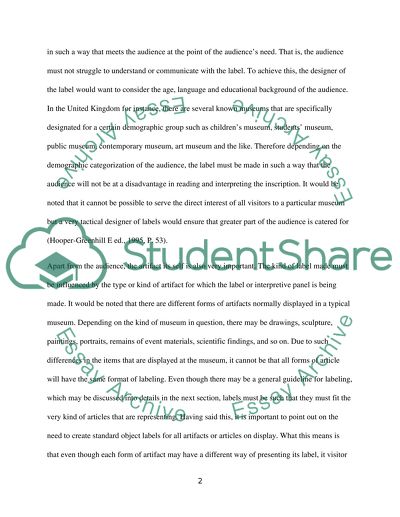Cite this document
(“Preparing a museum exhibition labels Essay Example | Topics and Well Written Essays - 1500 words”, n.d.)
Retrieved from https://studentshare.org/literature/1472917-when-preparing-a-museum-exhibition-what-issues
Retrieved from https://studentshare.org/literature/1472917-when-preparing-a-museum-exhibition-what-issues
(Preparing a Museum Exhibition Labels Essay Example | Topics and Well Written Essays - 1500 Words)
https://studentshare.org/literature/1472917-when-preparing-a-museum-exhibition-what-issues.
https://studentshare.org/literature/1472917-when-preparing-a-museum-exhibition-what-issues.
“Preparing a Museum Exhibition Labels Essay Example | Topics and Well Written Essays - 1500 Words”, n.d. https://studentshare.org/literature/1472917-when-preparing-a-museum-exhibition-what-issues.


